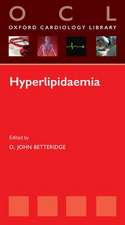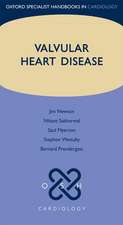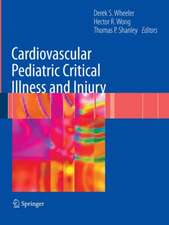Cardiac therapy
Editat de Michael R. Rosen, Brian F. Hoffmanen Limba Engleză Hardback – 30 aug 1983
| Toate formatele și edițiile | Preț | Express |
|---|---|---|
| Paperback (1) | 1348.65 lei 38-44 zile | |
| Springer Us – 4 ian 2012 | 1348.65 lei 38-44 zile | |
| Hardback (1) | 1396.15 lei 38-44 zile | |
| Springer Us – 30 aug 1983 | 1396.15 lei 38-44 zile |
Preț: 1396.15 lei
Preț vechi: 1469.63 lei
-5% Nou
Puncte Express: 2094
Preț estimativ în valută:
267.19€ • 277.92$ • 220.58£
267.19€ • 277.92$ • 220.58£
Carte tipărită la comandă
Livrare economică 10-16 aprilie
Preluare comenzi: 021 569.72.76
Specificații
ISBN-13: 9780898385649
ISBN-10: 0898385644
Pagini: 568
Ilustrații: X, 568 p.
Dimensiuni: 210 x 279 x 37 mm
Greutate: 0 kg
Ediția:1983
Editura: Springer Us
Colecția Springer
Locul publicării:New York, NY, United States
ISBN-10: 0898385644
Pagini: 568
Ilustrații: X, 568 p.
Dimensiuni: 210 x 279 x 37 mm
Greutate: 0 kg
Ediția:1983
Editura: Springer Us
Colecția Springer
Locul publicării:New York, NY, United States
Public țintă
ResearchDescriere
Cardiac therapy has become ever more complex during the past quarter century. For example, 25 years ago, the therapy of cardiac failure was largely limited to digitalis, a very few diuretics, salt restriction, and general supportive measures. Antiarrhythmic therapy involved - in the main - quinidine, procainamide, and digitalis, and questions such as which arrhythmia to treat and how to measure drug efficacy had been addressed in elementary fashion only. Cardiac surgery was limited largely to congenital and valvular heart disease; the areas of cardiac pacemaker therapy, defibrillation and other forms of electrical diagnosis and therapy were rudimentary. The expansion of support of cardiovascular research by the National Institutes of Health as well as by institutional sources following World War II has led to major successes in clinical health care delivery and improved technology made available to clinical investigators. In reviewing progress over the past 25 years, we have been particularly impressed by one observation: this is the important interaction that has developed between studies of pathophysiology and the delivery of appropriate cardiac therapy.
Cuprins
One: Pathophysiology.- 1. Electrophysiologic determinants of normal cardiac rhythms and arrhythmias.- 2. Cardiac failure.- 3. Myocardial ischemia.- Two: Cardiac Autonomic Interactions and their Pharmacologic Modification.- 4. Neural control of cardiac rhythm and contraction.- 5. Cholinergic agonists and antagonists.- 6. Alpha- and beta-adrenergic agonists and antagonists.- Three: Therapy of Cardiac Arrhythmias.- 7. Pharmacology of antiarrhythmic drugs.- 8. Clinical use of antiarrhythmic drugs.- 9. Cardiac pacing: role in the diagnosis and treatment of disorders of cardiac rhythm and conduction.- 10. Surgical therapy of arrhythmias.- Four: Therapy of Cardiac Failure and Ischemia.- 11. The pharmacology of cardiac glycosides.- 12. The pharmacology of diuretics.- 13. The pharmacology of vasodilators and antianginal drugs.- 14. Treatment of cardiac failure.- 15. Medical management of ischemic heart disease.- 16. Cardiac surgical therapy of atherosclerosis and angina.










